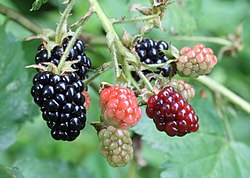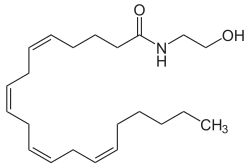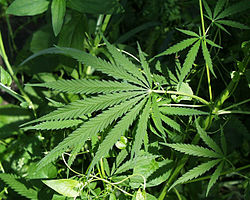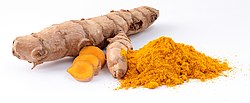Natural therapeutics: Difference between revisions
→Cancers and cannabis: + https://herb.co/learn/cannabis-cancer-treatment |
m missing bracket |
||
| Line 266: | Line 266: | ||
* [https://herb.co/learn/cannabis-cancer-treatment Everything You Need To Know About Cannabis And Cancer Treatment, a 2017 article at herb.co] | * [https://herb.co/learn/cannabis-cancer-treatment Everything You Need To Know About Cannabis And Cancer Treatment, a 2017 article at herb.co] | ||
* https://herb.co/news/health/cannabis-kills-cancer/ These Are The 4 Ways Cannabis Kills Cancer, a 2016 article at herb.co] | * [https://herb.co/news/health/cannabis-kills-cancer/ These Are The 4 Ways Cannabis Kills Cancer, a 2016 article at herb.co] | ||
---- | ---- | ||
Revision as of 09:53, 17 October 2018
Nature provides us with many healing agents but these are often pushed to the periphery of public knowledge to ensure big pharma profits.
Blackberries

Blackberries kill antibiotic resistant staphylococcus aureus bacteria[1]. Irish teen awarded prize for discovery.[2]
Cannabis

Cannabis is the oldest and most versatile medicine known to humankind.
Cannabis sativa and Cannabis indica are the main cannabis variants though most strains are mixes of these. A third cannabis line is the Cannabis ruderalis, a rugged northern cannabis that has adapted to flower even under northern long summer days.
The endocannabinoid receptors
Main article in wikipedia Endocannabinoid system
Human body contains 2 types of endocannabinoid receptors CB1 and CB2.
CB1 receptors
CB1 receptors predominantly located in the nervous system, connective tissues, gonads, glands, and organs[3].
CB2 receptors
CB2 receptors, primarily found in the immune system and also present in the spleen, liver, heart, kidneys, bones, blood vessels, lymph cells, endocrine glands, and reproductive organs[3].
Endocannabinoids

Endocannabinoids are produced by our own bodies from Arachidonic acid or Omega-6 fatty acid[4].
The two main endocannabinoids are Anandamide and 2-AG.
Anandamide
Anandamide was discovered in 1992 and it binds to both CB1 and CB2 receptors. The name comes from the Sanskrit word 'Ananda' meaning 'bliss' and amide from its chemistry.
It has been referred to as the endocannabinoid version of THC.
2-AG

2-Arachidonoylglycerol aka. 2-AG was discovered in 1994-1995.
N-Arachidonoyl dopamine
N-Arachidonoyl dopamine discovered in 2000.
2-Arachidonyl glyceryl ether
2-Arachidonyl glyceryl ether discovered in 2001.
Virodhamine
Virodhamine discovered in 2002
Lysophosphatidylinositol
Lysophosphatidylinositol is a contender to be the 6th endocannabinoid.
Further reading
- https://hempedification.wordpress.com/2017/08/05/endocannabinoids-beyond-the-brain/
- http://profofpot.com/endocannabinoid-receptors/
Phytocannabinoids
Many people may know the 2 most prevalent phytocannabinoids, THC and CBD.
List of known phytocannabinoids from Wikipedia:
- THC (Tetrahydrocannabinol)
- THCA (Tetrahydrocannbinolic acid)
- CBD (Cannabidiol)
- CBDA (Cannabidiolic Acid)
- CBN (Cannabinol)
- CBG (Cannabigerol)
- CBC (Cannabichromene)
- CBL (Cannabicyclol)
- CBV (Cannabivarin)
- THCV (Tetrahydrocannabivarin)
- CBDV (Cannabidivarin)
- CBCV (Cannabichromevarin)
- CBGV (Cannabigerovarin)
- CBGM (Cannabigerol Monomethyl Ether)
- CBE (Cannabielsoin)
- CBT (Cannabicitran)
THC

Tetrahydrocannabinol was found in 1964[5] and it is the main psychoactive compound that brings the 'high' most recreational users are chasing.
THCA
Tetrahydrocannabinolic acid THCA is the what cannabis plants produce to fend off insects from harming it. In pure form THCA is a clear translucent crystalline of white color.
THC is produced from the raw THCA by a process called decarboxylation. Basically means to heat the stuff over certain temperature.
THCA found in raw marijuana apparently has some health enhancing properties. The issue is being researched.
CBD

Cannabidiol and it was isolated and identified from Cannabis sativa in 1940[5]. CBD is not psychoactive and it has the most medical applications of all phytocannabinoids.
“Cannabidiol has little affinity for CB1 and CB2 receptors but acts as an indirect antagonist of cannabinoid agonists.[6]”
- Hightimes in detail piece on CBD
- Leafly lists strains high in CBD
- Piece on CBD as anti-pain agent (contains ads)
- WHO preliminary report on CBD
CBDA
Cannabidiolic Acid is the raw form. Decarboxylating CBDA yields CBD.
CBN
Cannabinol is a sleeping aid and has also other therapeutic qualities.
- https://www.massroots.com/learn/cannabinol-cbn-cannabinoid/
- https://www.medicaljane.com/2013/08/19/cannabinol-cbn-will-put-you-to-bed/
CBG
“Cannabigerol has been shown to promote apoptosis in cancer cells and inhibit tumor growth in mice. It acts as an α2-adrenergic receptor agonist, 5-HT1A receptor antagonist, and CB1 receptor antagonist.[7] It also binds to the CB2 receptor.[7]”
CBC
CBL
CBV
THCV
Tetrahydrocannabivarin can be used to inhibit appetite.
Links about THCV
CBDV
CBCV
Cannabichromevarin
CBGV
Cannabigerovarin
CBGM
Cannabigerol Monomethyl Ether
CBE
Cannabielsoin
CBT
Cannabicitran
Cannabis therapeutics


Cannabis can be applied to treat a wide assortment of illnesses. In this case it is called medical cannabis.
Due to the inbuilt default to always take the safe route and also to backup the back of your fellow MD colleague the Wikipedia does not yield the right infos on how useful and versatile a medication cannabis is.
Research has been held back by arcane laws even as cannabis is the oldest medicine known to man and it should be gladly appreciated and not outlawed because of big pharma interests.
Alzheimer's disease and cannabis
Cannabis has been found to be beneficial for Alzheimer's sufferers. Especially true this is for THC which inhibits the formulation of toxic beta amyloid protein plaque on braincells which causes Alzheimer's disease.
- News (2016): "Cannabinoids remove plaque-forming Alzheimer’s proteins from brain cells" @ salk.edu - Preliminary lab studies at the Salk Institute find THC reduces beta amyloid proteins in human neurons
- Wikipedia article on Alzheimer's disease research has only a few words about cannabis therapeutics and those are very sceptical.
Amyotrophic lateral sclerosis and cannabis
Cannabis helps with Amyotrophic lateral sclerosis (ALS) also known as Lou Gehrig's disease and motor neurone disease (MND).
Asthma and cannabis
Autism and cannabis
- http://www.newsweek.com/2018/02/23/really-good-weed-why-cannabis-may-be-worlds-most-effective-remedy-core-806758.html
- https://www.whatiscbd.com/cbd-for-autism/
Autoimmune diseases and cannabis
Cannabis helps with many autoimmune diseases due to its anti-inflammatory and other properties.
Links about autoimmune diseases and cannabis
Rheumatoid arthritis and cannabis
Cannabis helps with Rheumatoid arthritis.
Links about Rheumatoid arthritis and cannabis
Lupus and cannabis
Cannabis helps with Systemic lupus erythematosus
Coeliac disease and cannabis
Cannabis helps with Coeliac disease.
Psoriasis and cannabis
Cannabis helps with Psoriasis and eczema when applied externally.
Type 1 diabetes and cannabis
Multiple sclerosis (MS) and cannabis
Cannabis is very good against Multiple sclerosis. Prince Charles knew of this way back in 1998[8].
- https://herb.co/news/health/marijuana-and-ms
- https://www.learngreenflower.com/articles/440/treating-multiple-sclerosis-with-cannabis
Cancers and cannabis
Key things everyone needs to know about cancers and cannabis
Warning: Smoking the cannabis as the method of cannabinoid delivery the smoke contains quite a few carcinogenic substances i.e. cancer inducing substances. See the section administering cannabis for alternatives to smoking it.
Internet is rife with stories about winning the battle against cancer with the help of phytocannabinoids. What does the science say?
Cannabis is...
- Anti-proliferative - cannabis is against tumor growth [9]
- Anti-metastatic - cannabis is against cancer spreading to other parts in the body because of metastatic activity[9]
- Anti-angiogenetic - cannabis is against new blood vein growth to tumor[9]
- Apoptotic - cannabis causes cancer cells to programmedly kill themselves via Apoptosis. [9]
- Pain relief - cannabis works very well against the somatic and nonsomatic pains brought on by cancer.
- Appetite stimulator - cannabis helps maintain a good appetite.
- Anti-nauseatic - cannabis helps with the chemotherapy-induced nausea and vomiting if you receive chemotherapy. World's first study of cannabis for chemotherapy's negative effects is underway in Australia. [10] [11]
Phytocannabinoids are harmless to healthy cannabinoid receptor containing cells.
- Everything You Need To Know About Cannabis And Cancer Treatment, a 2017 article at herb.co
- These Are The 4 Ways Cannabis Kills Cancer, a 2016 article at herb.co
Links about cannabis and cancer in general
"Official" information
- National Cancer Institute of USA on cancers and cannabis (health professional version)
- National Cancer Institute of USA on cancers and cannabis (patient version)
Cannabis and cancers advocacy
- Cannabis Research A to Z, the letter 'C'
- Exposing The Truth: Links with abstracts to 123 scientific articles on cannabis and cancers
- https://herb.co/news/health/cancer-institute-finally-admits-marijuana-kills-cancer/
- https://herb.co/news/health/us-govt-admits-marijuana-kills-cancer-cells/
Testimonies about cannabis and cancer
Scientific studies about cannabis and cancers in general
Learn from videos by experts in phytocannabinoid treatment of cancers
Info: Cristina Sánchez is a molecular biology research scientist who did her doctorate on cannabinoids and cancers. She is the leader of all time in researching the anti-cancer qualities of cannabinoids. Another molecular biology researcher working on researching the potential of cannabis as a cancer medication in the Complutense University of Madrid is Dr. Manuel Guzmán
Videos
- Dr. Cristina Sanchez interview where she expains how apoptosis makes cancer cells kill themselves
- Dr. Cristina Sanchez on how cannabinoids work against cancers
- Dr. Cristina Sanchez at Cannafest Prague 2015
- Dr. Cristina Sanchez lecture in Australia (no slideshow shots, sorry)
See also: Cancers and turmeric (intra-article link)
Leukemia and cannabis
There are 2 main types of Leukemia:
- Myeloid leukemia (of the bone marrow)
- Lymphoid leukemia (of the lymphatic node)
Links about Lympoid and Myeloid leukemia and cannabis
Links about Lymphoid leukemia and cannabis
- https://ocgreenrelief.org/medical-marijuana/cannabis-oil-acute-leukemia-2
- http://truemedmd.com/2014/06/cannabis-oil-acute-leukemia/
Links about Myeloid leukemia and cannabis
- http://www.leafscience.com/2013/10/14/cannabinoids-destroy-leukemia-cells-new-study-finds/
- https://medijane.co.za/disease-index/will-marijuana-cure-cancer/acute-myeloid-leukemia-aml-cannabis/
Prostate cancer and cannabis
Cannabis helps with prostate cancer.
Brain cancer and cannabis
A glioma is a type of tumor that starts in the glial cells of the brain or the spine. (Wikipedia) A blastoma is a type of cancer, more common in children, that is caused by malignancies in precursor cells. (Wikipedia)
Glioblastoma is the most aggressive form of brain cancer, but it may potentially be treated with cannabis.[12]
In 2018 Insys Therapeutics announced the the FDA has given CBD an orphan drug designation (ODD) to CBD for treating gliomas.[13]
- https://herb.co/news/health/cannabis-treat-brain-cancer/
- https://herb.co/news/health/taylor-rehmeyer/
Liver cancer and cannabis
Crohn's disease and cannabis
Study shows THC helps with Crohn's disease.
Epilepsy and cannabis

Cannabis can be used to treat epilepsy.
Migraines and cannabis
It has been suggested that clinical endocannabinoid deficiency syndrome (CEDS) may be causing migraines. Many studies found medical cannabis as an effective prophylaxis against migraine attacks, especially the high CBD strains.
- CBD Testers article on treating migraines with medical cannabis and link to the study 'Effects of Medical Marijuana on Migraine Headache Frequency in an Adult Population' at PubMed that the article is talking about.
- Abstracts of studies on migraines and medical cannabis at migrainebuds.com
Pain treatment with cannabis
“You just don't feel like thinking about the pain.”
“There is more to it than that.”
Cannabis is anti-inflammatory which helps relieve some of the pain. Pain is a signal of inflammation so counter-acting inflammation causing things cannabis naturally helps lower the pain.
Parkinsons disease and cannabis
Non-somatic issues with cannabis
Cannabis can help with various non-somatic problems such as psychiatry, depression and PTSD.
PTSD and cannabis
Administering cannabis
There are various other ways to administer cannabis methods besides smoking it:
- Vaping (short for vaporizing), a method where the plant material is heated hot enough for the cannabinoids to become gaseous but cold enough that the plant matter does not combust and thus avoiding the carcinogens that come from burning the plant matter.
- Edibles - Cannabinoids are soluble to alcohol and to fat and cannabis can be infused into many forms of edibles, but the problem is with efficiency as your stomach acids will destroy a lot of the cannabinoids.
- Rectal - some doctors recommend taking cannabis rectally as this is method of administering allows you to take very large doses efficiently.[14]
- Topicals - for some skin affecting conditions this is a good way to administer the medicine. Many skin condition sufferers praise the combination of cannabis and coconut oil to make a topical to apply to the affected skin.
External links about cannabis as medicine
- http://www.calgarycmmc.com/ a large compendium on medical cannabis sorted alphabetically by ailment.
- http://www.cannabisconnections.tk/2018/03/700-medicinal-uses-of-cannabis-sorted.html
- http://expand-your-consciousness.com/100-scientific-studies-agree-cannabis-annihilates-cancer/ about 100 nig.gov studies linked some cases briefly described.
- 71 medical uses of cannabis compiled by LearnGreenFlower.com
Literature about cannabis as a medicine
- MARIJUANA AS MEDICINE? The Science Beyond the Controversy, a book published in 2000 that you can read on-line from The National Academies Press .
Pineapple

Pineapple fruit and it's stem contain Bromelain, an enzyme with anti-cough properties.
In vitro and in vivo studies demonstrate that bromelain exhibits various fibrinolytic, antiedematous, antithrombotic, and anti-inflammatory activities.[15] Bromelain accounts for many therapeutic benefits like the treatment of angina pectoris, bronchitis, sinusitis, surgical trauma, and thrombophlebitis, debridement of wounds, and enhanced absorption of drugs, particularly antibiotics.[15]
Stevia

Stevia works against the Lyme disease.[16]
Turmeric


Turmeric contains curcumin, a curcuminoid.
Cancers and turmeric
Curcumin has been found to have anti-cancer properties. Curcumin interferes with cancer via multiple cell signaling pathways, including cell cycle, apoptosis, proliferation, survival, invasion, angiogenesis, metastasis and inflammation[17].
- Study: Curcumin and Cancer Cells: How Many Ways Can Curry Kill Tumor Cells Selectively?
- General info: Turmeric and cancers article by Cancer Research UK
See also: Cancers and cannabis (intra-article link)
Alzheimer's and turmeric
- Optimized Turmeric Extract Reduces β-Amyloid and Phosphorylated Tau Protein Burden in Alzheimer’s Transgenic Mice suggests that turmeric may be useful for Alzheimer's sufferers as it has been shown to inhibit beta amyloid aggregation and secretation in mice.
See also: Alzheimer's and cannabis (intra-article link)
Information sources on natural therapeutics
References
- ↑ https://www.ncbi.nlm.nih.gov/pubmed/28270804
- ↑ https://www.hygiene-in-practice.com/publication/student-discovers-blackberry-antibiotic-for-multi-resistant-pathogens/
- ↑ 3.0 3.1 https://patients4medicalmarijuana.wordpress.com/2017/07/06/how-and-why-your-brain-makes-its-own-cannabinoids/
- ↑ https://wakeup-world.com/2014/09/08/the-endocannabinoid-system-and-how-thc-cures-cancer/
- ↑ 5.0 5.1 https://en.wikipedia.org/wiki/Tetrahydrocannabinol
- ↑ Mechoulam, Raphael; Peters, Maximilian; Murillo-Rodriguez, Eric; Hanuš, Lumír O. (2007). "Cannabidiol – Recent Advances". Chemistry & Biodiversity 4 (8): 1678–92. PMID 17712814. doi:10.1002/cbdv.200790147.
- ↑ 7.0 7.1 Cascio, MG; Gauson, LA; Stevenson, LA; Ross, RA; Pertwee, RG (2010). "Evidence that the plant cannabinoid cannabigerol is a highly potent α2-adrenoceptor agonist and moderately potent 5HT1A receptor antagonist". British Journal of Pharmacology 159 (1): 129–41. PMC 2823359. PMID 20002104. doi:10.1111/j.1476-5381.2009.00515.x.
- ↑ https://www.theguardian.com/uk/1998/dec/24/monarchy.ameliagentleman
- ↑ 9.0 9.1 9.2 9.3 https://herb.co/news/health/cannabis-kills-cancer/
- ↑ https://herb.co/news/health/world-first-cannabis-chemotherapy/
- ↑ https://www.medicinalcannabis.nsw.gov.au/clinical-trials/chemotherapy-trial
- ↑ https://www.medicaldaily.com/marijuana-just-might-help-cure-one-deadliest-forms-brain-cancer-410947
- ↑ http://wphealth.cc/2018/10/11/fda-approves-cannabis-for-brain-cancer-treatment/
- ↑ https://hightimes.com/health/science/doctors-orders-put-marijuana-in-your-butt-dont-smoke-it/
- ↑ 15.0 15.1 https://www.ncbi.nlm.nih.gov/pmc/articles/PMC3529416/
- ↑ https://www.healthspiritbody.com/lyme-disease-treatment/
- ↑ https://www.sciencedirect.com/science/article/pii/S0304383508002310